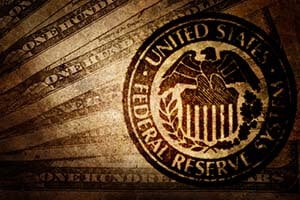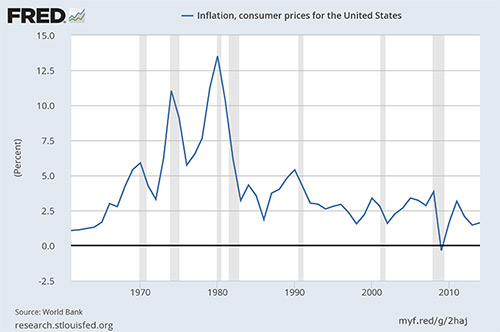 The one question on every investor's mind this December is will the Fed raise rates?
The one question on every investor's mind this December is will the Fed raise rates?
In a testimony before Congress on Nov. 4, U.S. Federal Reserve Chairwoman Janet Yellen said the economy was "performing well" and that there was a "live possibility" of a rate hike in December. They were ambiguous remarks - as always - but they did signal it's more likely than ever that the Fed will raise rates.
Many financial analysts and economists think the Fed is finally going to raise rates at its Dec. 15-16 meeting, even if only by a small percentage. If so, it would be the Fed's first interest rate hike since June 2006.
CME Group, one of the largest futures and options exchanges in the United States, says there's a nearly 80% chance the Fed will raise rates in December. And according to a poll by The Wall Street Journal, 92% of business and academic economists also think the Fed will raise rates in December.
We agree - even though a rate hike is not a good move.
"They (the Fed) shouldn't raise rates," Money Morning Chief Investment Strategist Keith Fitz-Gerald said earlier this month, "but I actually think the Fed is going to go ahead and do it."
For a rate hike to happen, the Fed must conclude the economy has significantly improved since the Great Recession. And the way the Fed sees the data, the economy has...
These are the numbers the Fed sees as reason to raise rates next week...
[mmpazkzone name="in-story" network="9794" site="307044" id="137008" type="4"]
Will the Fed Raise Rates? These Numbers Indicate So...
The Fed closely monitors job growth each month. That's because job growth is one of the best signs of a healthy economy. And the Fed sees recent jobs reports as promising.
In October, the economy added 271,000 new jobs. In November, the U.S. economy added 211,000 nonfarm jobs. Contrast this with the employment situation during the height of the Great Recession, when the economy shed 533,000 jobs in November 2008.
Now the national unemployment rate is at 5%, which many economists consider "full employment." In a healthy labor force, there will always be workers leaving their current jobs for new ones. That's why an unemployment rate of say, 0%, wouldn't be a good thing. There should always be workers looking for better jobs.
The labor force participation rate, which indicates those who have left the labor force, is actually lower than it was during the Great Recession, with nearly 40% of Americans not actively looking for work. This may be because of the wave of retiring baby boomers, but it also may signify a labor force that hasn't completely recovered.
Unfortunately, the Fed pays the most attention to the unemployment rate, which only accounts for people who are looking for work. America's shrinking labor force should concern the Fed. By maintaining lower rates, the Fed could continue to encourage businesses to borrow and expand, which could incentivize discouraged workers to reenter the labor force.
The Fed also says it's on track to meet its 2% inflation target in the medium term.
In her most recent speech on Dec. 2, Yellen said she expects inflation to reach the Fed's 2% target in the next few years.
Low inflation prevented the Fed from raising rates in the past. Inflation is currently at 1.3% for the 12 months ending in October.
 Recent CPI data, which is a measure of inflation for consumer goods, has shown a healthy percentage increase each month. The stronger U.S. dollar and the struggling energy sector, however, are putting downward pressure on inflation. But Yellen said in her speech that these inflation drags should "diminish in the next few years."
Recent CPI data, which is a measure of inflation for consumer goods, has shown a healthy percentage increase each month. The stronger U.S. dollar and the struggling energy sector, however, are putting downward pressure on inflation. But Yellen said in her speech that these inflation drags should "diminish in the next few years."
While this number looks good to the Fed, it's important to keep in mind that the current inflation rate, measured by CPI, isn't completely accurate. It doesn't include food or energy, which are typically two of the most price-volatile sectors of the U.S. economy.
"Official measures of inflation tell a very different story from the reality facing consumers as they shop for groceries, gasoline, insurance, healthcare, and other everyday goods," said Money Morning Global Credit Strategist Michael E. Lewitt. "In the real world away from government statistics, product prices continue to rise at an inexorable rate."
Regardless, markets are expecting the Fed will raise rates at the end of its two-day meeting Dec. 16.
Tweet the author @cgsaucier, or leave a comment on Money Morning's Facebook page.
The Markets Will Crash Again: The cracks are already showing. But the impending collapse is also an opportunity. By understanding these five "Super Crash" inevitabilities and making key adjustments, investors can protect their portfolios from the downside while positioning for the upside. This is your last chance to act before it's too late...


